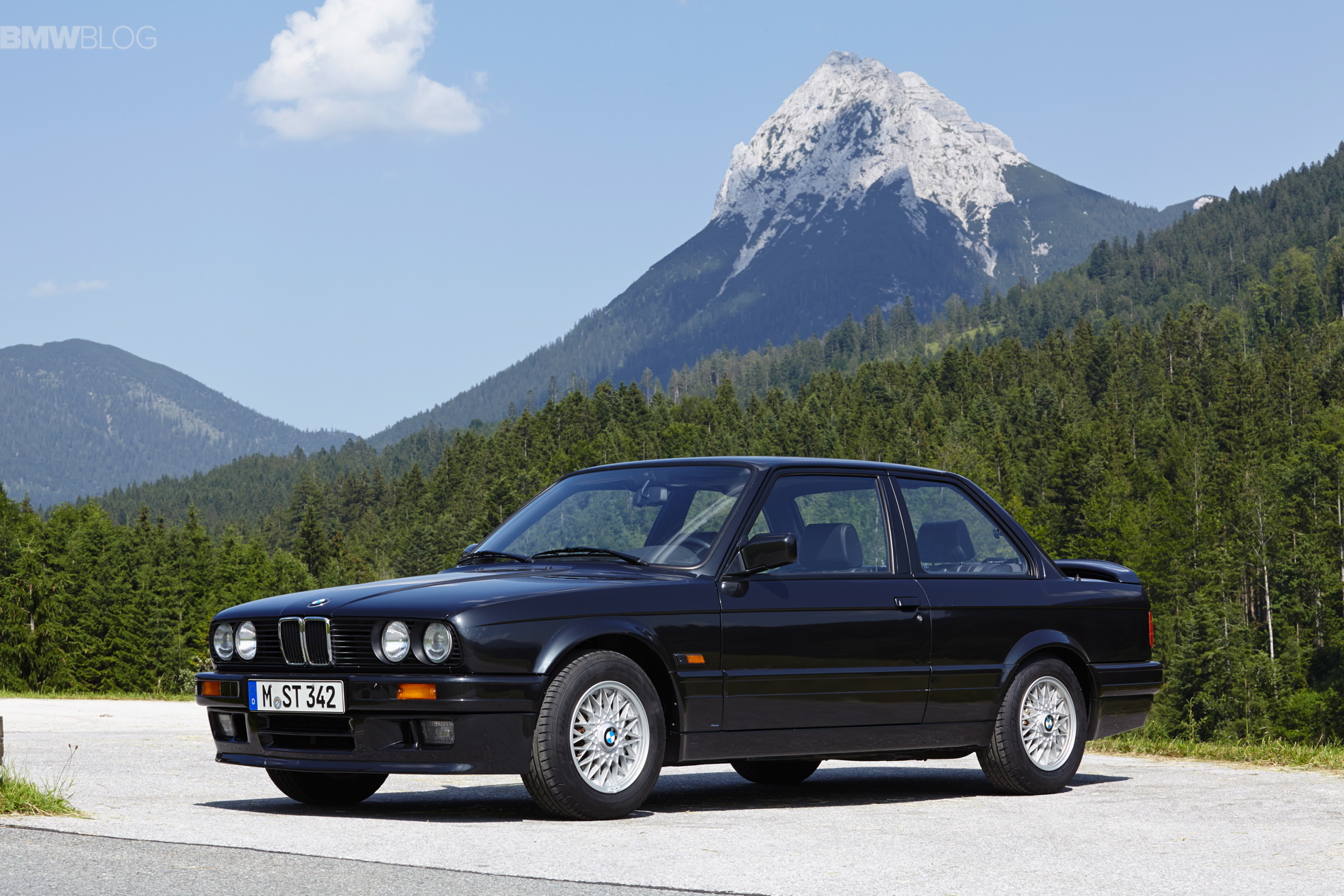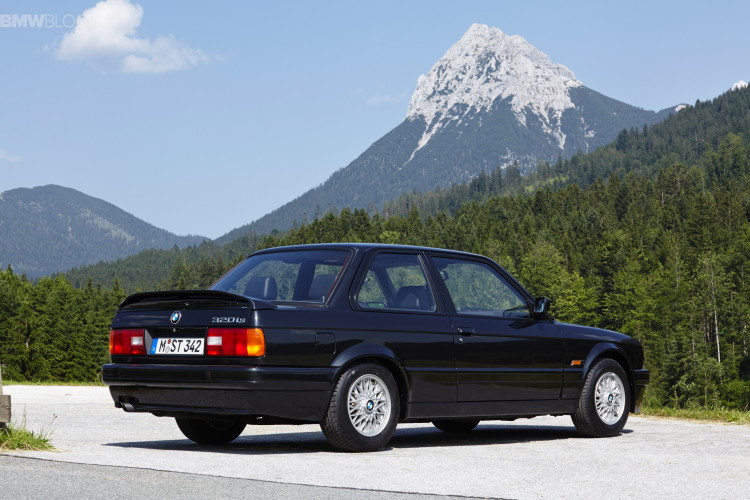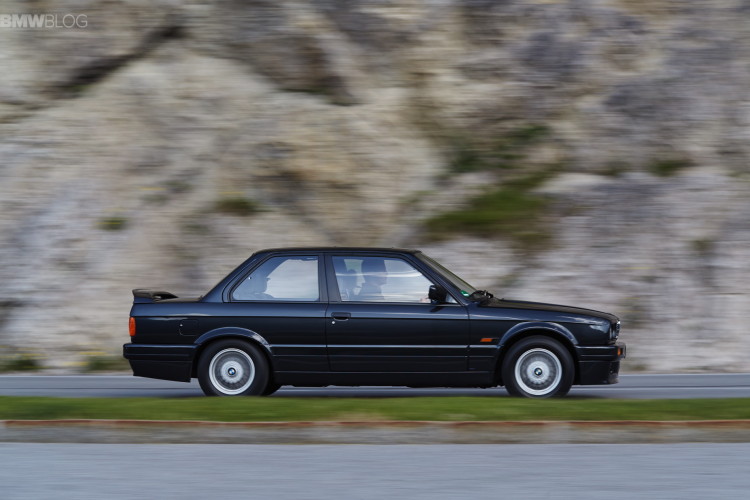The E30 was a series of cars BMW produced in many variations for the US from 1984 to 1993. In the car’s heyday it was synonymous with yuppies. Now however, it is known as a super fun to drive car, with the M variant being one of the most desirable BMW’s ever made. While these cars used to be very common to see on the street even just 15 years ago, they have sadly become increasingly rarer due to issues such as rust and just simple mechanical negligence.
Why Should I Buy One?
Whether you want a classic car for the weekends, or a daily for commuting to work or school, the E30 is a great choice. If you get a good example, and keep up maintenance, these cars can easily go past 250,000 miles on an original engine. If you want space, you can go for the Sedan or Touring (euro only). If you are fine with giving up a little bit of space for style, there is also the Coupe and Convertible. All variants are also really fun to drive. With most of the models being around 2600LBS, these cars are super light and great to toss around on backroads. If you are commuting, you can cruise on the highway at 80 all day long.
What to Buy
In the U.S. you could choose from 3 main models. The 318i, 325e, and 325i. There was also the E30 M3 but that deserves its own article in the future. You could purchase these cars with either a 5 speed manual, or a 4 speed automatic. The automatics can often be found for cheaper, but I would not recommend purchasing it just because it is a very old and slow transmission. They are nothing like the modern ZF 8’s or DCT’s.
The biggest cosmetic change happened in 1988. Previous to 1988 the U.S. model E30’s had huge chrome bumpers known in the enthusiast community as “diving boards”. In 1988 BMW switched to smaller plastic bumpers which lasted through the end of production. These plastic bumpers are more sought after and usually require a premium in the used E30 market.
318i/318is
The 318i was one of 2 models originally introduced for the US for the 1984 model year. It used a 1.8 Liter 4-cylinder engine known as the M10, producing 103 hp and 107 lb-ft of torque. In 1987 the ancient M10 was replaced by a new 4 cylinder known as the M40. This new engine was more powerful at 111 hp and 119 lb-ft of torque. And finally, in 1989 the 318is was introduced sporting the M42 which produced 134 hp and 127 lb-ft of torque. The s in the model name means sport. These cars were only sold in a coupe. They also came with sport suspension, style 5 basket weave wheels, a sport front lip, and a spoiler on the trunk.
325e/325es
The 325e was introduced alongside the 318i for the 1984 model year. The e in the name symbolizes efficiency. This car sported a 2.7 liter M20 Inline 6 producing 121 hp and 177 lb-ft of torque. Although the 325e’s feature the same great handling as other E30 models, the engine is not very enthusiast focused. With a redline of only 4800RPM this engine was designed for efficiency in mind, not spirited driving. Prices in the used market reflect this, as you can fine 325e’s for less than any of the 318i or 318is variations. In the later model years, BMW started badging the 325e as just the 325. The 325es featured the same upgrades as the 318is.
325i/325is/325ix
The 325i was introduced in 1987 as the 325e was starting to get phased out. It used the same basic M20 engine as the 325e, but it was downsized to 2.5 liters and featured many upgrades in order to drastically raise the power from 121hp to 167hp. This is the most sought after engine in the E30 range besides the M3. They sound amazing, are super bulletproof, and produce a great amount of power considering these cars only weigh around 2600 pounds. The 325is included the same sporty upgrades found in the 318is and 325es.
The 325ix was BMW’s first production all wheel drive car. It used a mechanical AWD system which featured a 37/63 rear bias. The main cosmetic differences are fender flares on both the front and rear wheels. The 325ix is a great choice if you live in a cold climate and plan to drive during winter weather.
What to Look For
The first thing you should check for when buying an E30 is to see if the timing belt, or timing chain has been changed recently. If it hasn’t, then you should plan on changing it out as soon as possible. The odometers are also very prone to breaking. When test driving, you should check to see if it works or not in order to see if the mileage listed is accurate. If the odometer is non functional, it is a relatively easy fix that can be done by yourself within an hour or two. Rust is also a huge problem on these cars. Rust repair is difficult, and expensive to get done. I would stay away from any cars with major rust. Look at the paint, and pay attention to if the paint is oxidized/faded, or if there are any major dents or scratches. Most E30 dashes are cracked. They can be replaced with an un cracked example, but it is difficult to replace, as well as expensive to purchase.
Price
Prices have been steadily rising on all E30’s in recent years. Expect to pay around $3,000-$4,000 on a decent condition 318i or 325e, and $5,000-$6,000 for a 325i. Double these prices if you want a car in really good condition. Cars in more desirable configurations such as late model coupe’s with a manual transmission and LSD will sell for even more.









































































